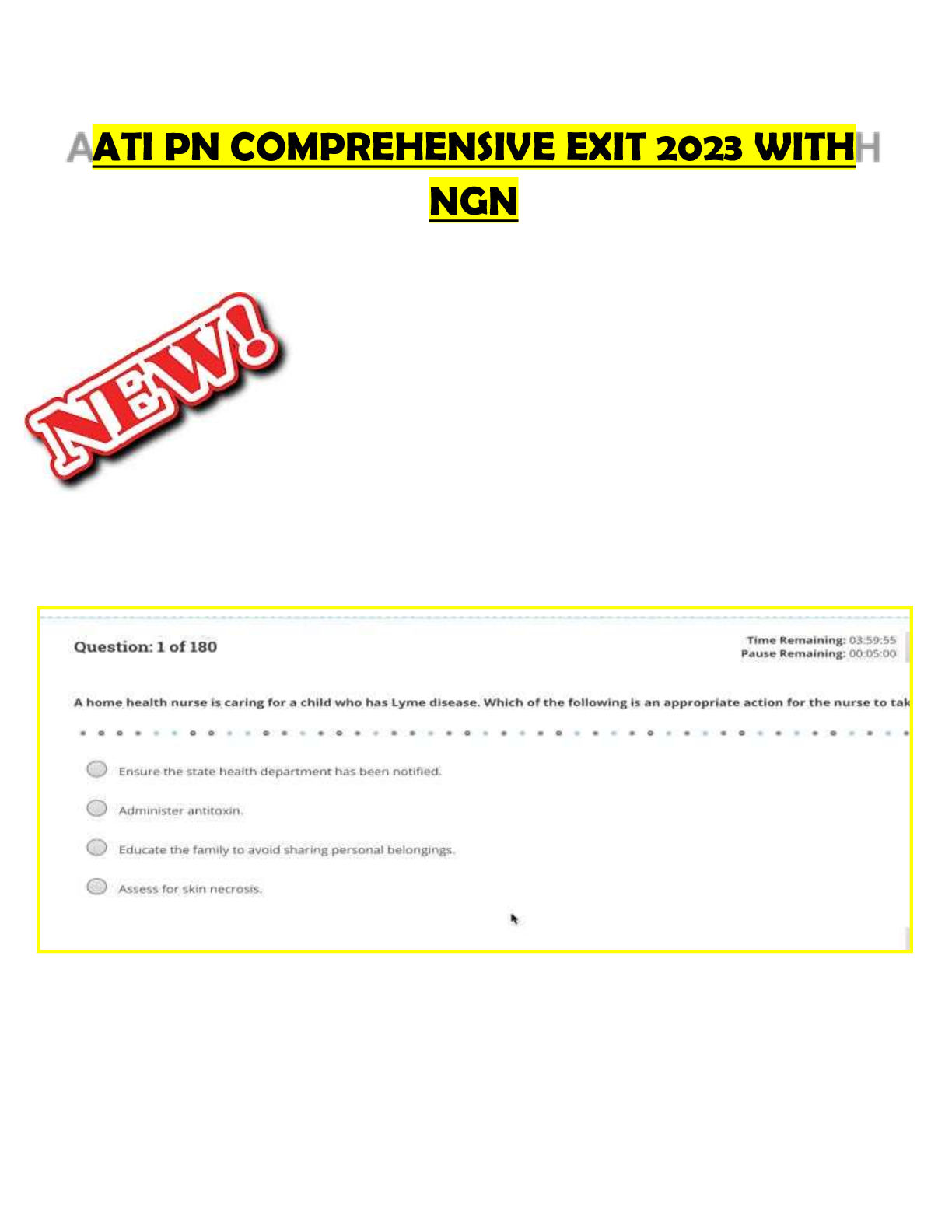Health Care > ATI > Blood Administration ATI Exam with complete solutions (All)
Blood Administration ATI Exam with complete solutions
Document Content and Description Below
A nurse started a transfusion of packed RBCs for a client 1 hour ago. The client has suddenly developed shaking chills, muscle stiffness, and a temperature of 30.6 C (101.5 F). The client appears flus... hed and reports a headache and "nervousness". The nurse should identify that the client has most likely developed which of the following types of transfusion reaction? A. Septic B. Acute hemolytic C. Allergic D. Febrile nonhemolytic - ANSWER D. Febrile nonhemolytic RATIONAL: This is the most common type of transfusion reaction. The characteristic fever usually develops within 2 hr after the transfusion is started. Other classic symptoms include chills, headache, flushing, anxiety, and muscle pain. This type of reaction is usually a result of sensitization to the plasma, platelets, or white blood cells. Although this type of reaction is not life-threatening, it can be frightening and uncomfortable for the client. A platelet transfusion is indicated for a patient who A. has a systemic infection. B. has thrombocytopenia. C. is in hypovolemic shock. D. has hemolytic anemia. - ANSWER B. has thrombocytopenia. RATIONAL: A client who has thrombocytopenia has a low platelet count. When platelet counts drop below 20,000/mm3, a transfusion of platelets is generally indicated for the client. A nurse is providing education to a client who has a prescription for a blood transfusion. Which of the following statements should the nurse include in the teaching? A. "I will check your vital signs every 15 minutes throughout the blood transfusion." B. "I might have a nursing assistant check on you periodically during the transfusion." C. "If you have no adverse effects in the first 15 to 30 minutes, you will not have any adverse effects later." D. "You must immediately report any symptoms like chills, nausea, or itching." - ANSWER D. "You must immediately report any symptoms like chills, nausea, or itching." RATIONAL: Although the nurse can identify objective signs of a transfusion reaction (changes in vital signs, flushing, cyanosis, coughing, and to some extent, dyspnea), the nurse might not be able to tell if the client is experiencing subjective symptoms (chills, nausea, chest pain, headache, backache, muscle pain). Subjective signs are important clues, and the nurse must be aware of them. A nurse is preparing a blood transfusion for a client who has type A blood. The nurse should know that the client can safely receive blood from blood group O because A. type O blood contains no A antigens. B. type A blood contains O antibodies. C. type O blood contains no A antibodies. D. type A blood contains O antigens. - ANSWER A. type O blood contains no A antigens. RATIONAL: Type O blood contains no antigens at all, which is why clients who have type O blood are considered universal donors. Their blood can be transfused to anyone who has any ABO-related blood type without putting them at risk for an ABO incompatibility. It is the specific antigens in the transfused blood that can trigger hemolytic reactions. Because type O blood has no antigens, it is safe for this client and for any other client. A nurse is preparing to initiate the transfusion of a unit of packed RBCs to a client. After the unit of blood has arrived, which of the following procedures will help the nurse protect the client against the possibility of a blood-group incompatibility? A. Comparing the ID numbers on the blood unit with those on the order form and the client's wristband B. Obtaining a blood sample from the client for typing and crossmatching C. Giving a prescribed pre-medication 30 min prior to starting the transfusion D. Observing the client for 15 to 30 min after the transfusion is initiated - ANSWER A. Comparing the ID numbers on the blood unit with those on the order form and the client's wristband RATIONAL: Before administering blood or blood products, the client's nurse and one other authorized individual are required to identify the client and compare the label on the blood product to the prescription in the medical record and the client's armband. These actions will verify that the correct client is receiving the correct blood and help prevent the possibility of a blood-group incompatibility. When administering a transfusion of packed red blood cells, it is important to A. allow the blood to warm to room temperature for 1 hr. B. make sure the entire unit is transfused within 4 hr. C. begin the blood transfusion at a rate of 10 mL/hr. D. change the blood tubing after every unit infused. - ANSWER B. make sure the entire unit is transfused within 4 hr. RATIONAL: Infusion times that exceed 4 hr increase the risk for bacterial proliferation. Ideally, a unit of packed RBCs is infused within 2 hr. Clients who are at risk for fluid-volume excess will require slower rates of infusion; however, the entire transfusion must not exceed 4 hr. A nurse is caring for a client who is receiving a blood transfusion and reports itching. The nurse observers areas of urticaria on the client's skin. Which of the following actions should the nurse take? A. Administer prescribed antipyretic. B. Stop the blood transfusion. C. Reevaluate the client in 15 min. D. Apply a warm compress to the affected areas. - ANSWER B. Stop the blood transfusion. RATIONAL: This client is exhibiting manifestations of a mild allergic reaction to the blood transfusion. The nurse should stop the transfusion and follow facility protocol regarding transfusion reactions. Which of the following actions should a nurse take prior to starting a blood transfusion? A. Establish intravenous access with a 22-gauge needle. B. Prime an infusion set with lactated Ringer's solution. C. Ensure that informed consent has been obtained from the client. D. Suggest that the client consider autologous transfusion. - ANSWER C. Ensure that informed consent has been obtained from the client. RATIONAL: It is the responsibility of the prescribing health care provider to answer the client's questions about the need, risks, and benefits of a procedure. A nurse can witness the client's signature indicating informed consent. This must be done prior to obtaining or administering the blood. A nurse is caring for a client who is about to receive a unit of packed RBCs and states, "This is my third unit of blood today. I don't want to get some disease from all this blood." Which of the following responses should the nurse make? A. "It is impossible for you to get an infection from donor blood." B. "Donated blood is carefully screened for infectious diseases." C. "The U.S. blood supply is among the safest in the world." D. "Why not ask your doctor about other treatment options?" - ANSWER B. "Donated blood is carefully screened for infectious diseases." RATIONAL: This statement is accurate. The nurse might continue to explain that the approach to blood safety in the U.S. includes stringent donor selection practices and the use of screening tests for HIV, AIDS, hepatitis B and C, syphilis, and other infectious diseases. Infected blood and blood products are safely discarded and are not used for transfusions. A client who is anticipating total hip replacement is considering autologous transfusion. When teaching this client about autologous transfusion, it is important to emphasize that A. it reduces the risk of mismatched blood. B. a hemoglobin level above 9.5 mg/dL is required to receive this transfusion. C. there is no need to test the blood for infectious diseases. D. donations can be made every other day. - ANSWER A. it reduces the risk of mismatched blood. RATIONAL: Mismatched blood can cause an immune response to another person's antigens. Because the client is their own donor in an autologous transfusion, there is no risk of exposure to another person's antigens. [Show More]
Last updated: 1 year ago
Preview 1 out of 4 pages

Reviews( 0 )
Document information
Connected school, study & course
About the document
Uploaded On
Jul 16, 2022
Number of pages
4
Written in
Additional information
This document has been written for:
Uploaded
Jul 16, 2022
Downloads
0
Views
41

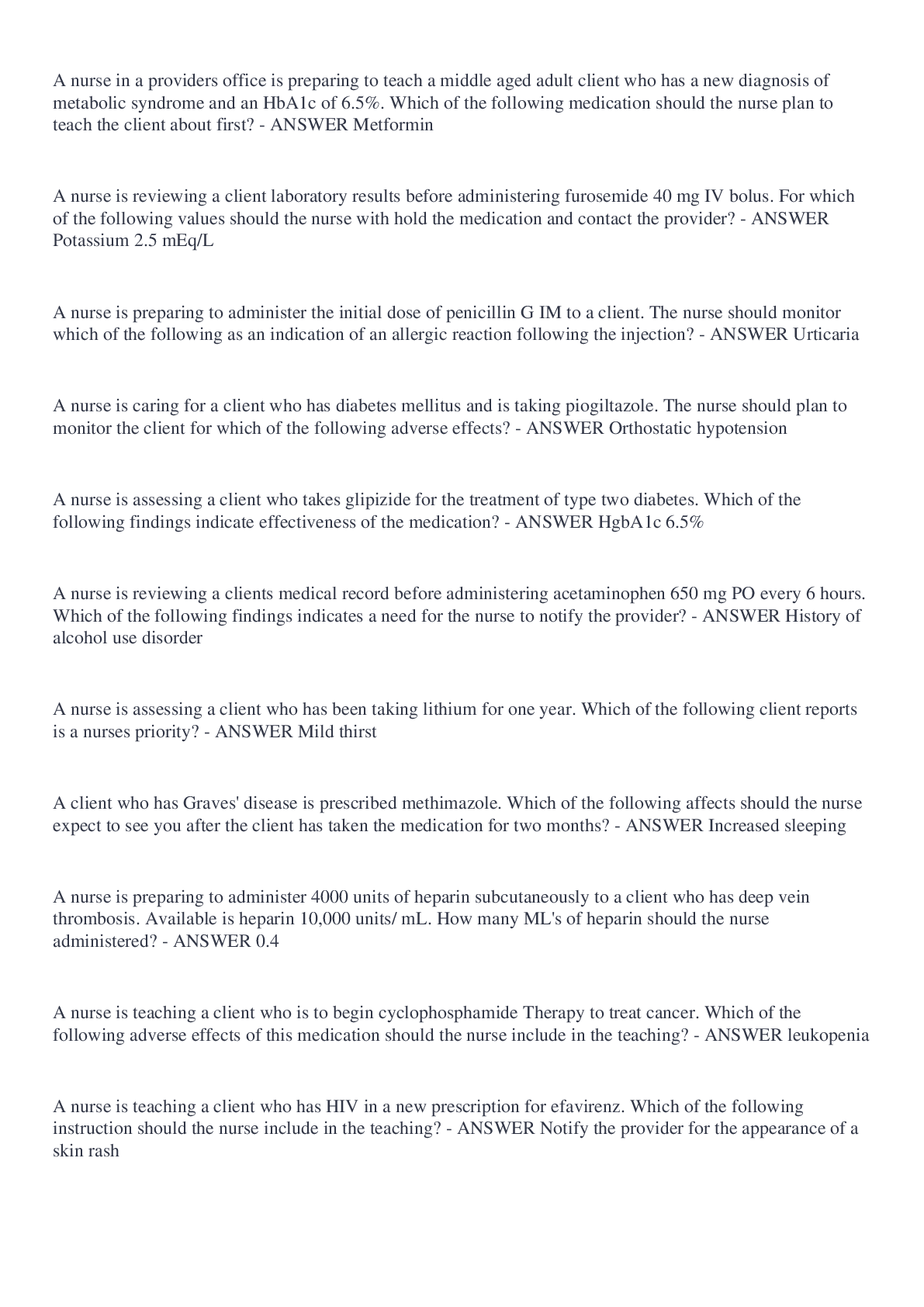
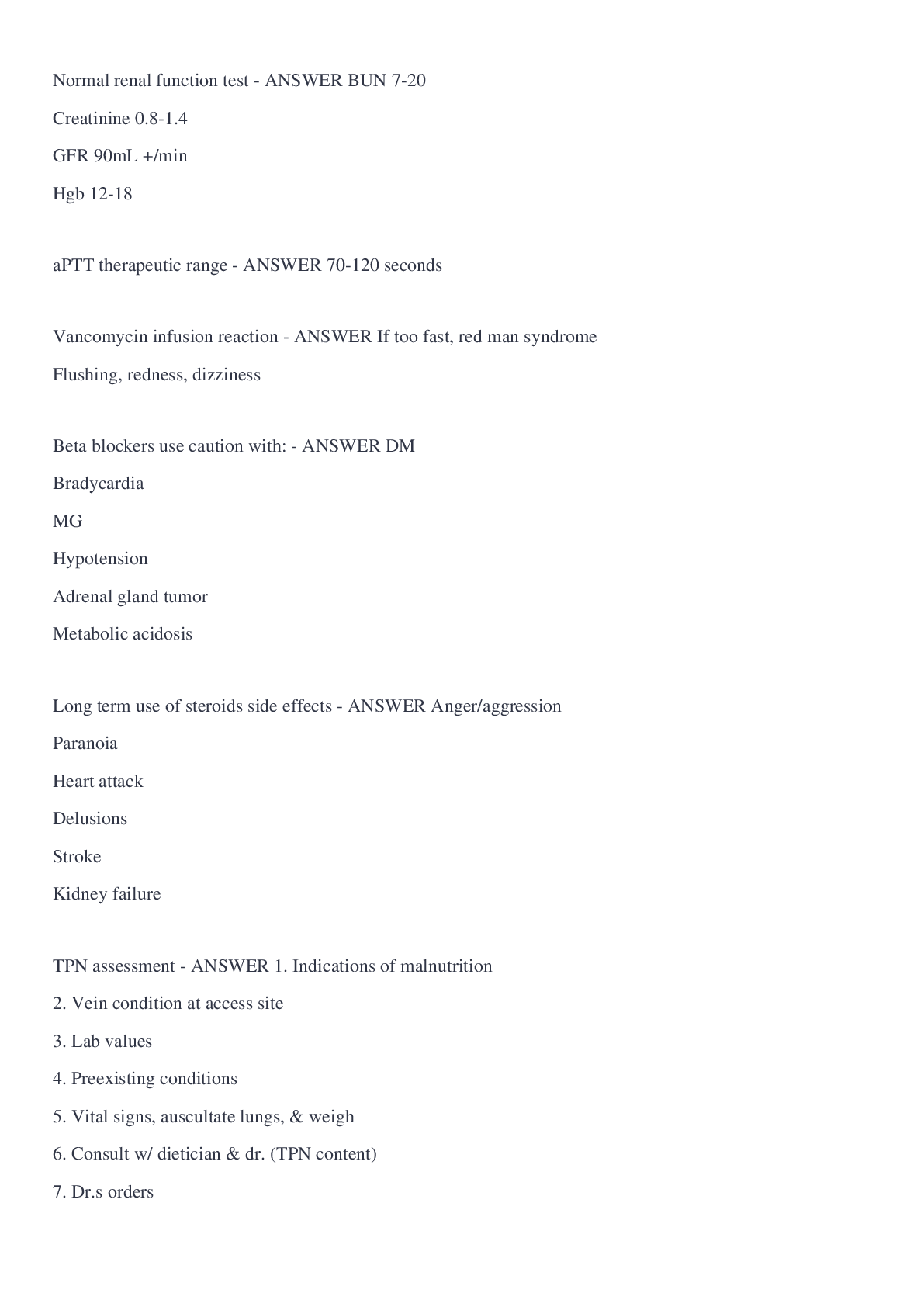
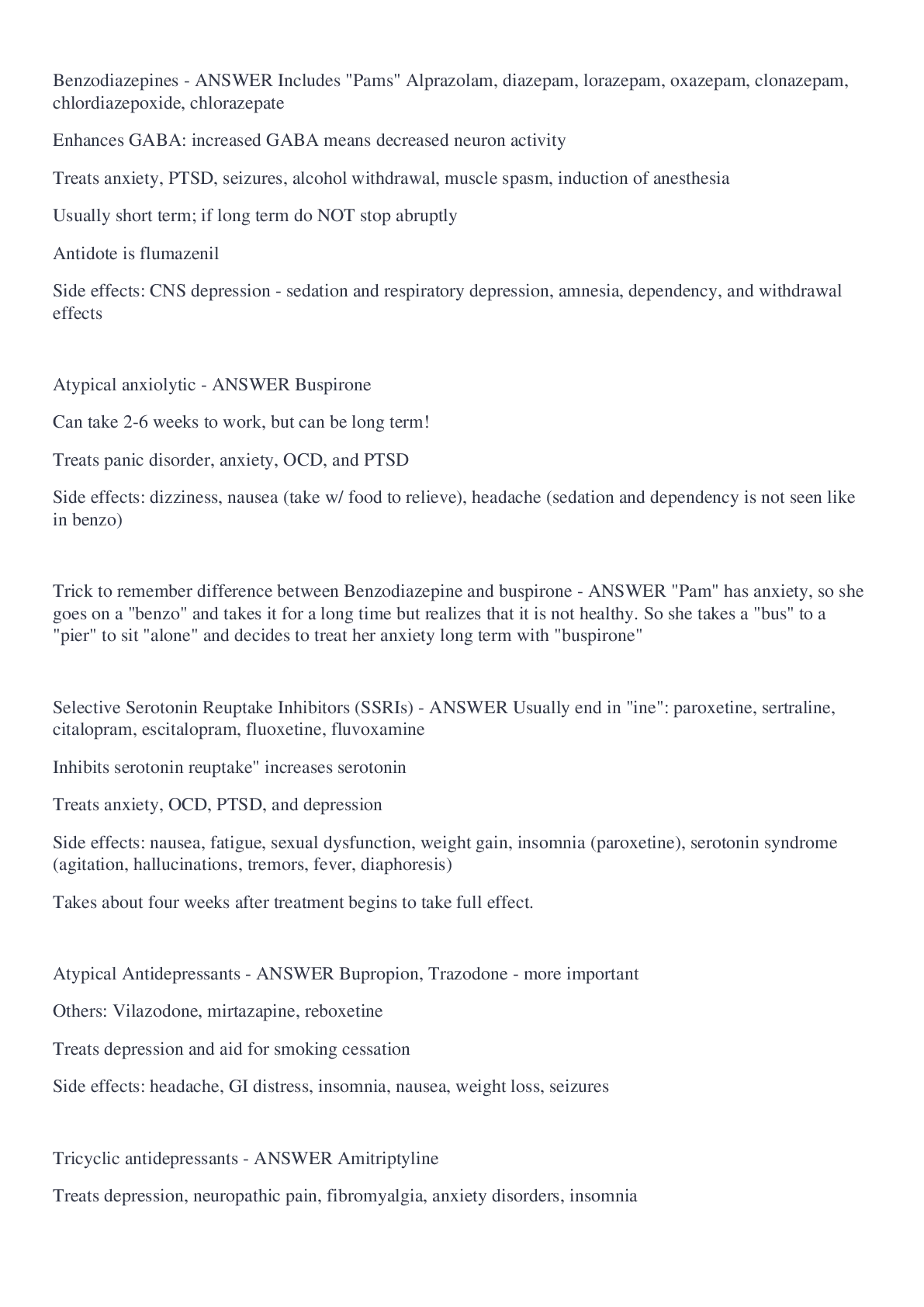
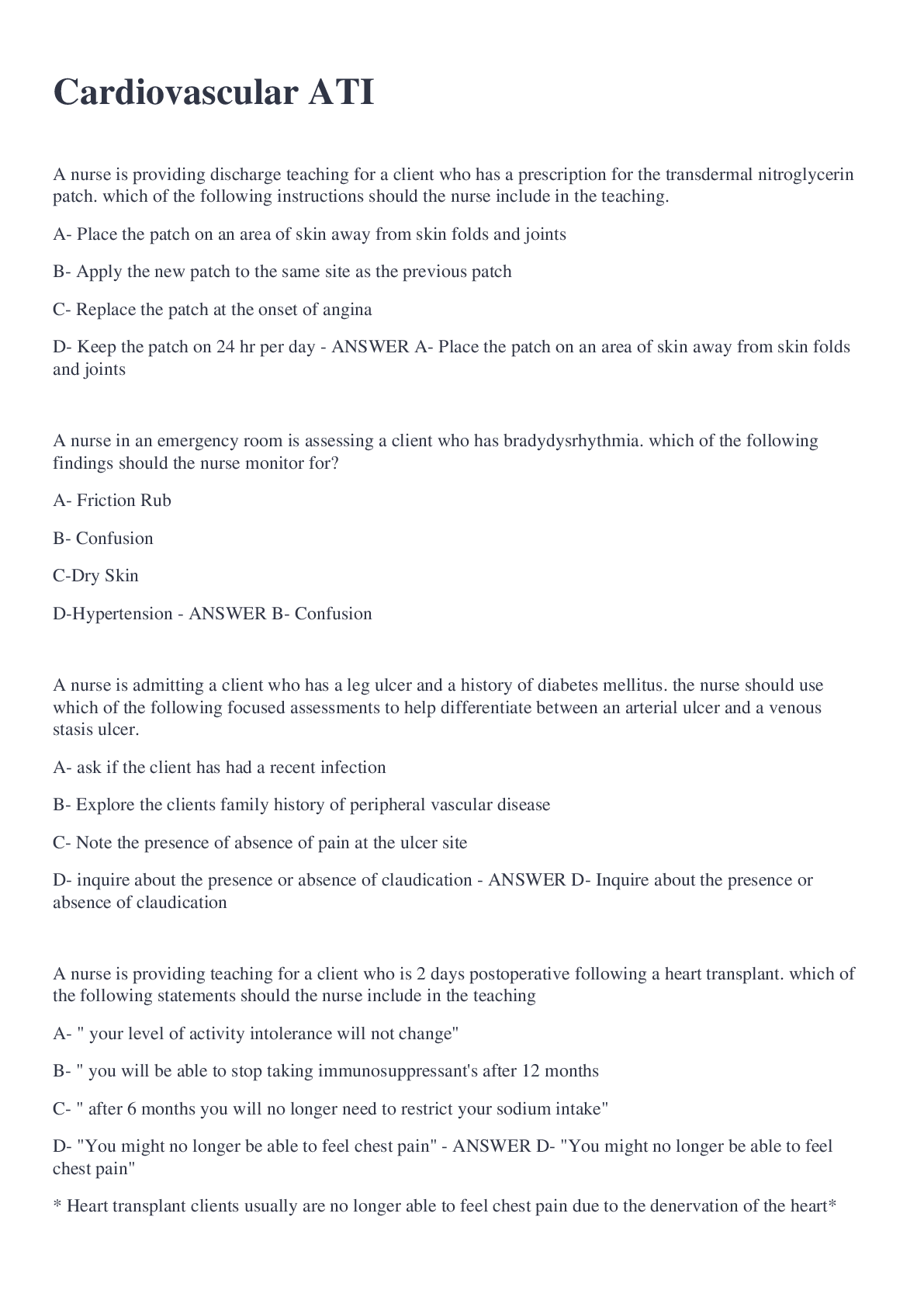


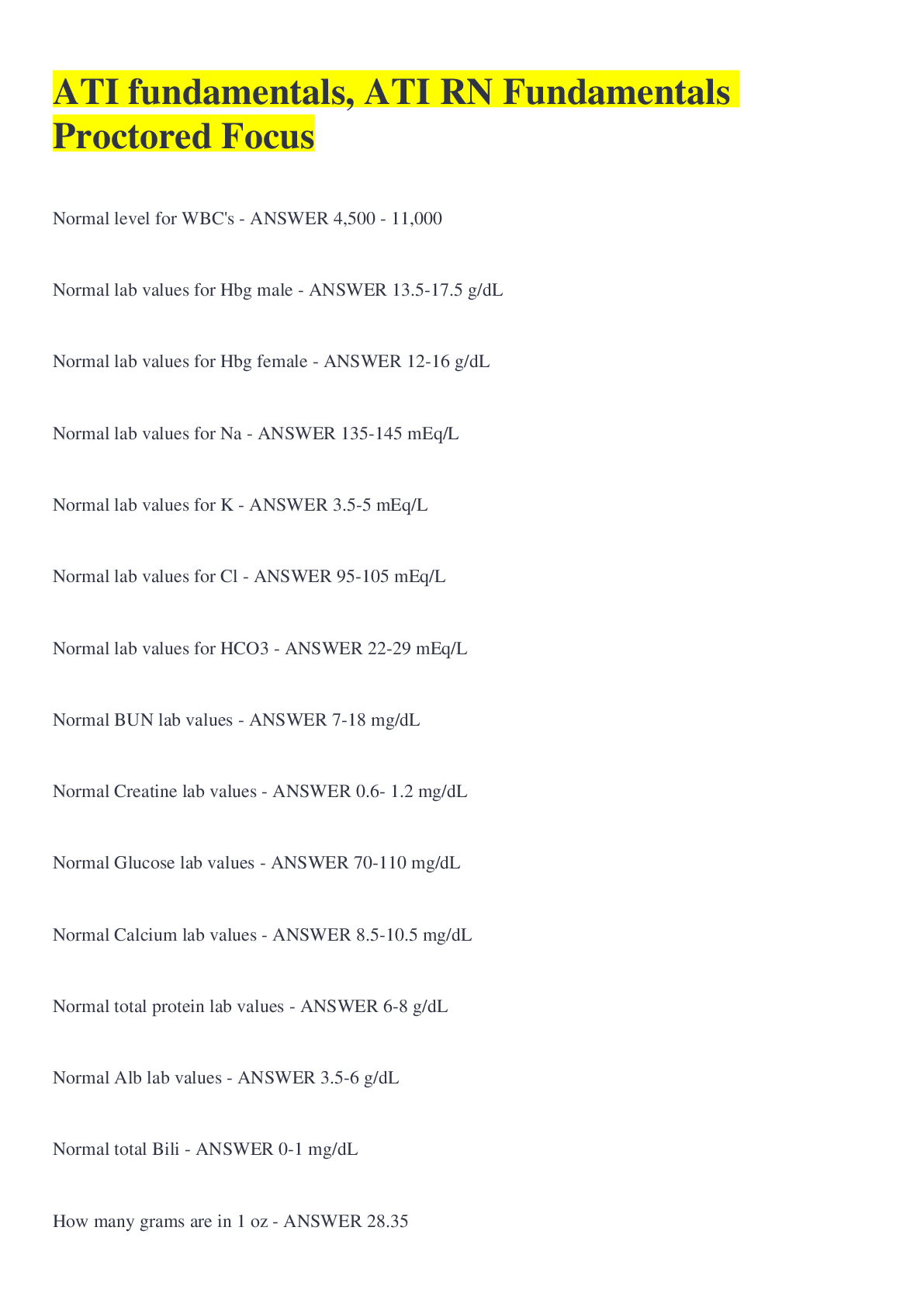
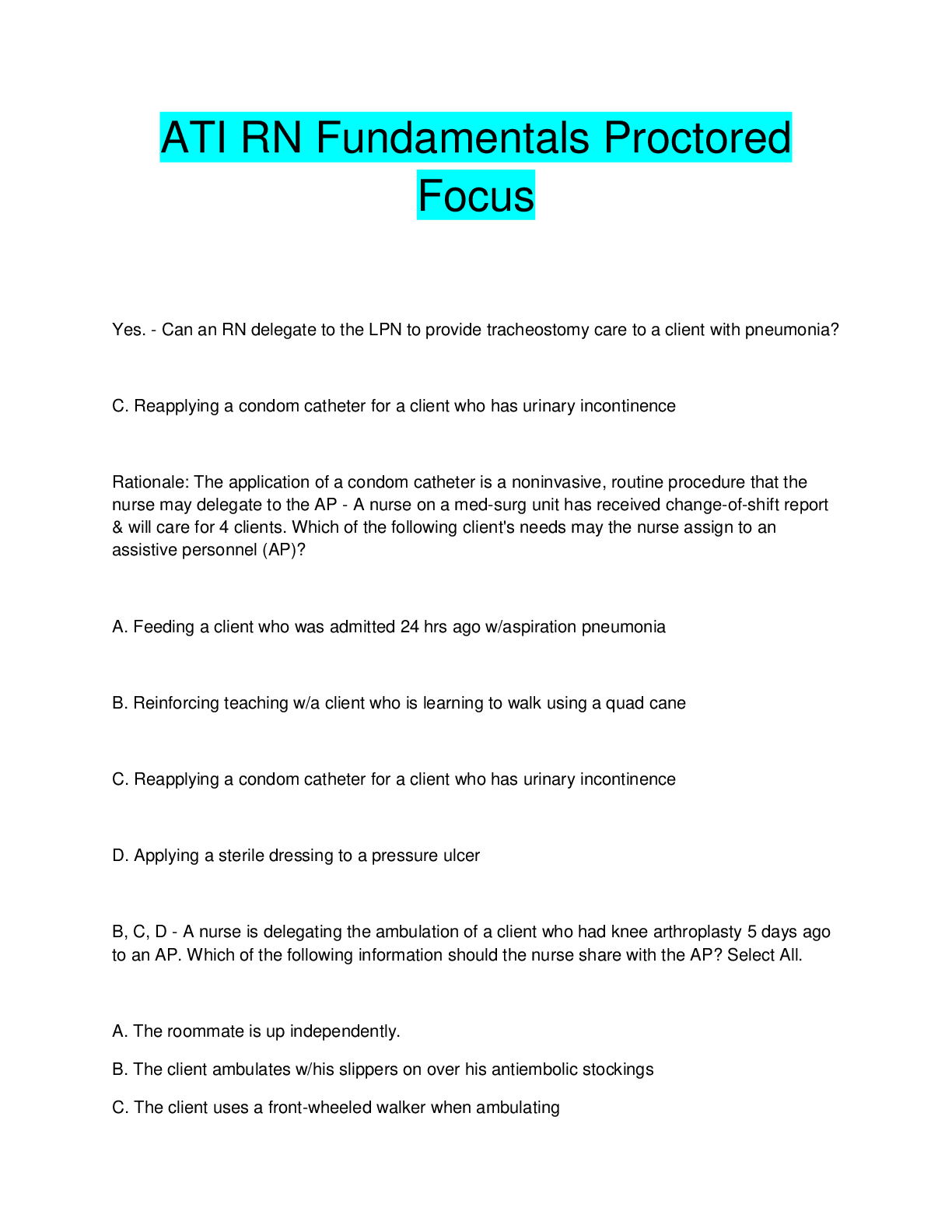
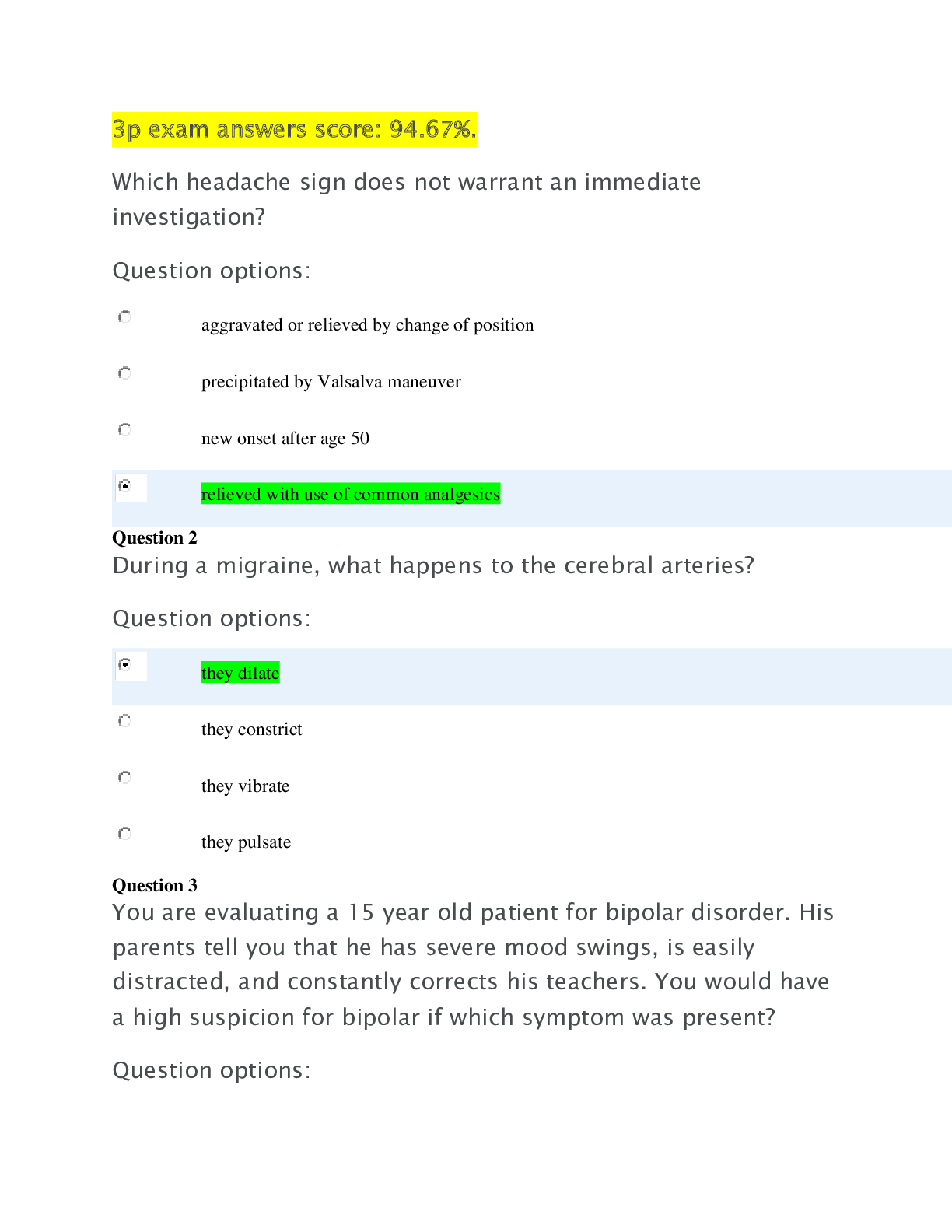


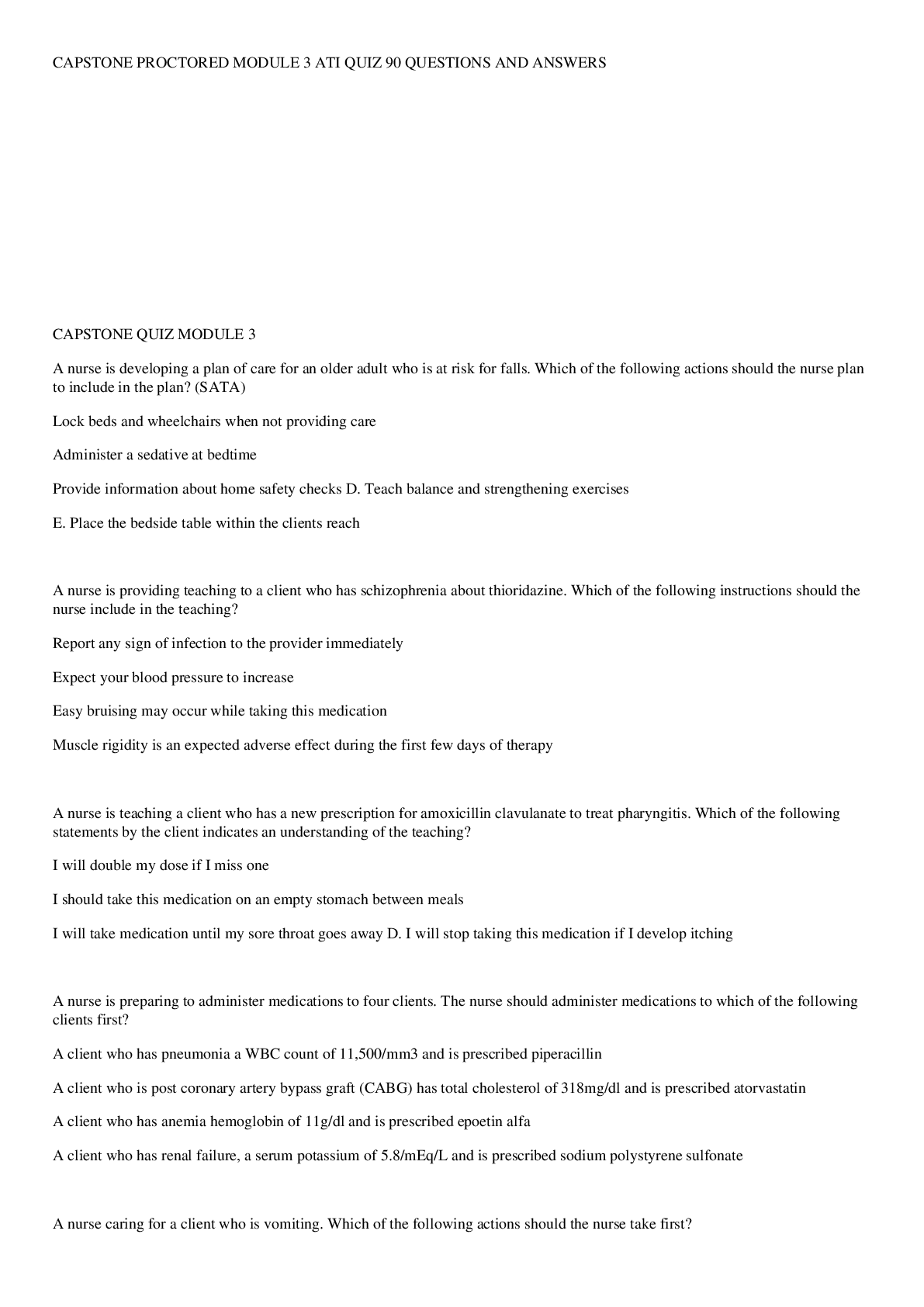
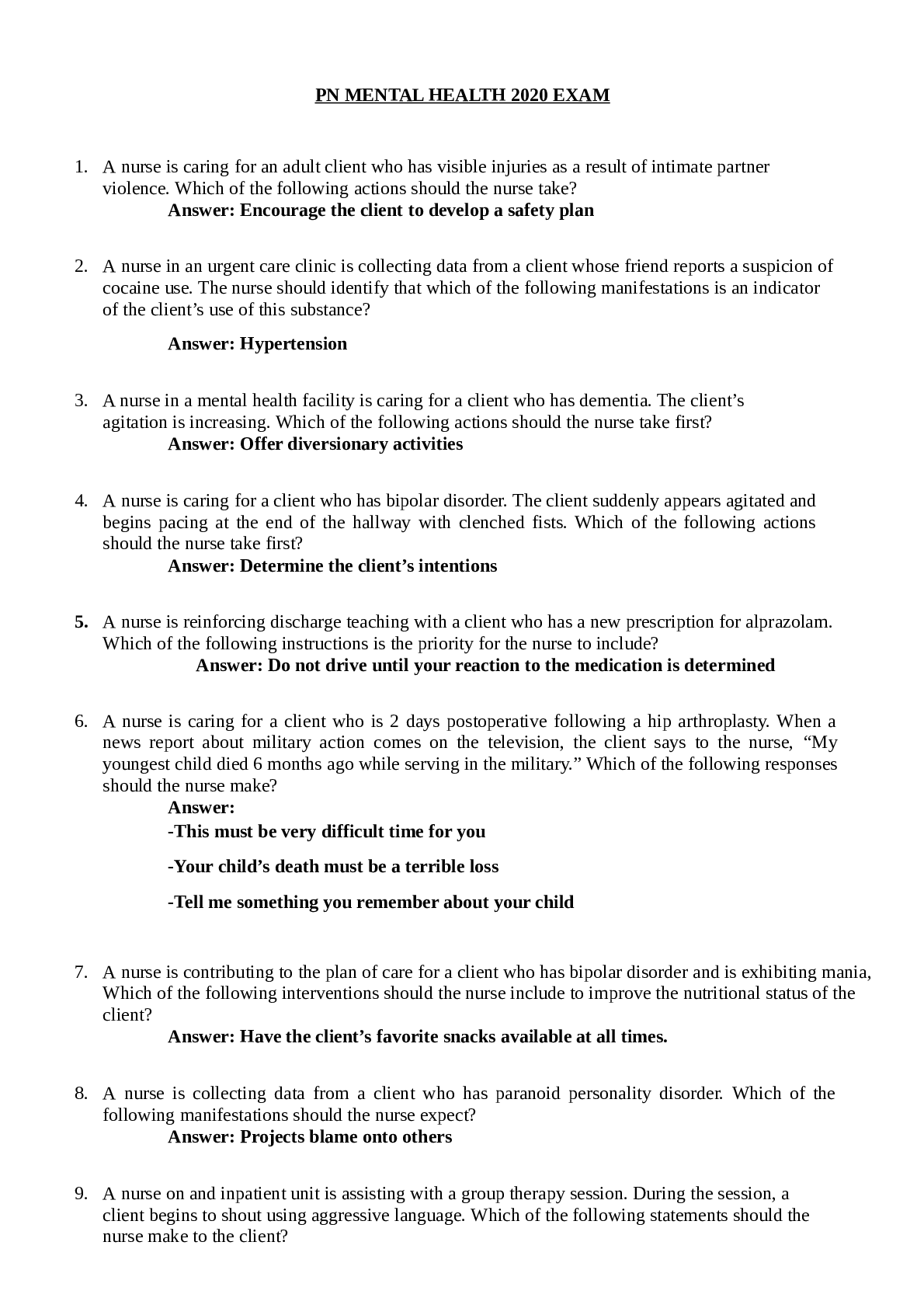
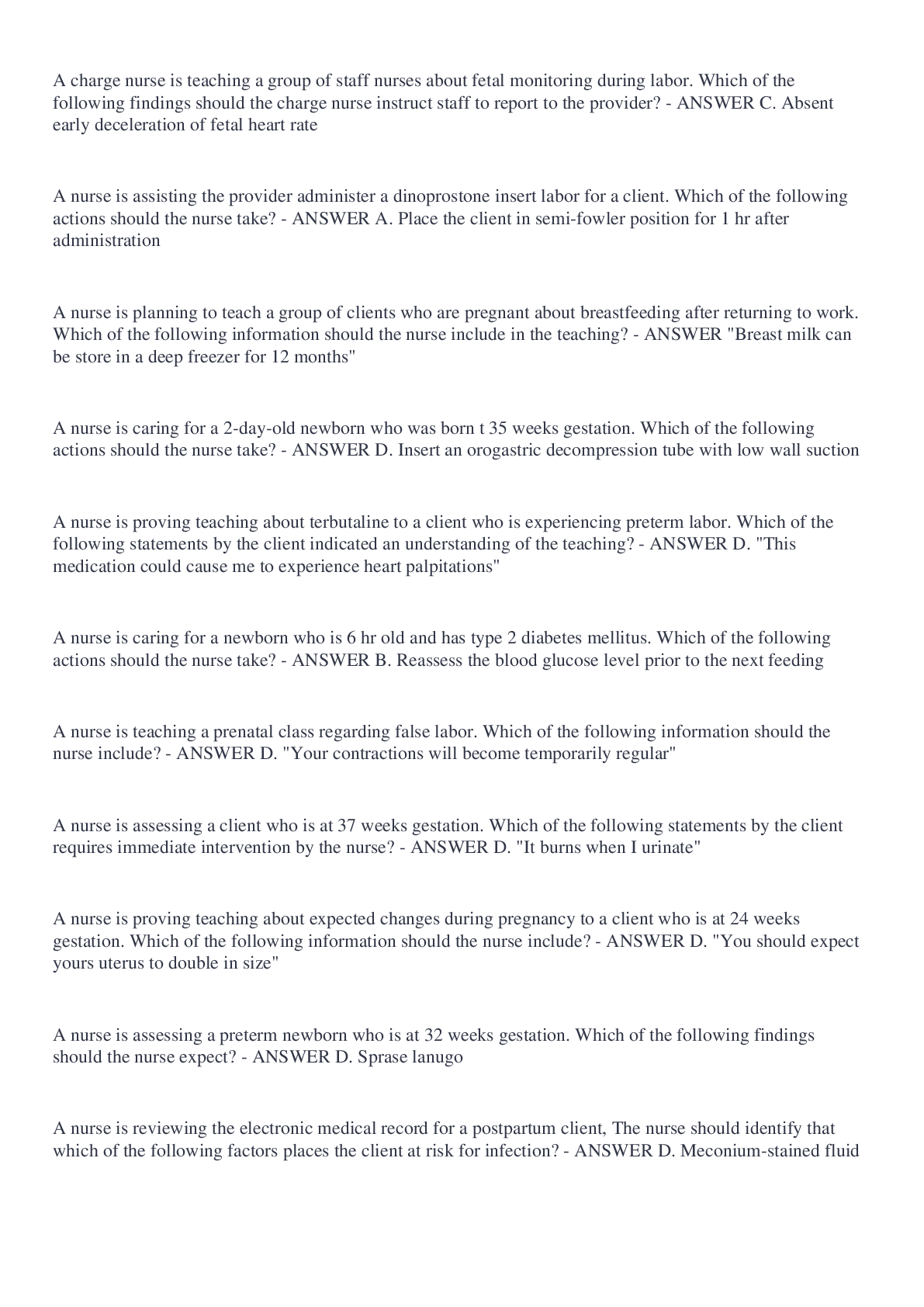



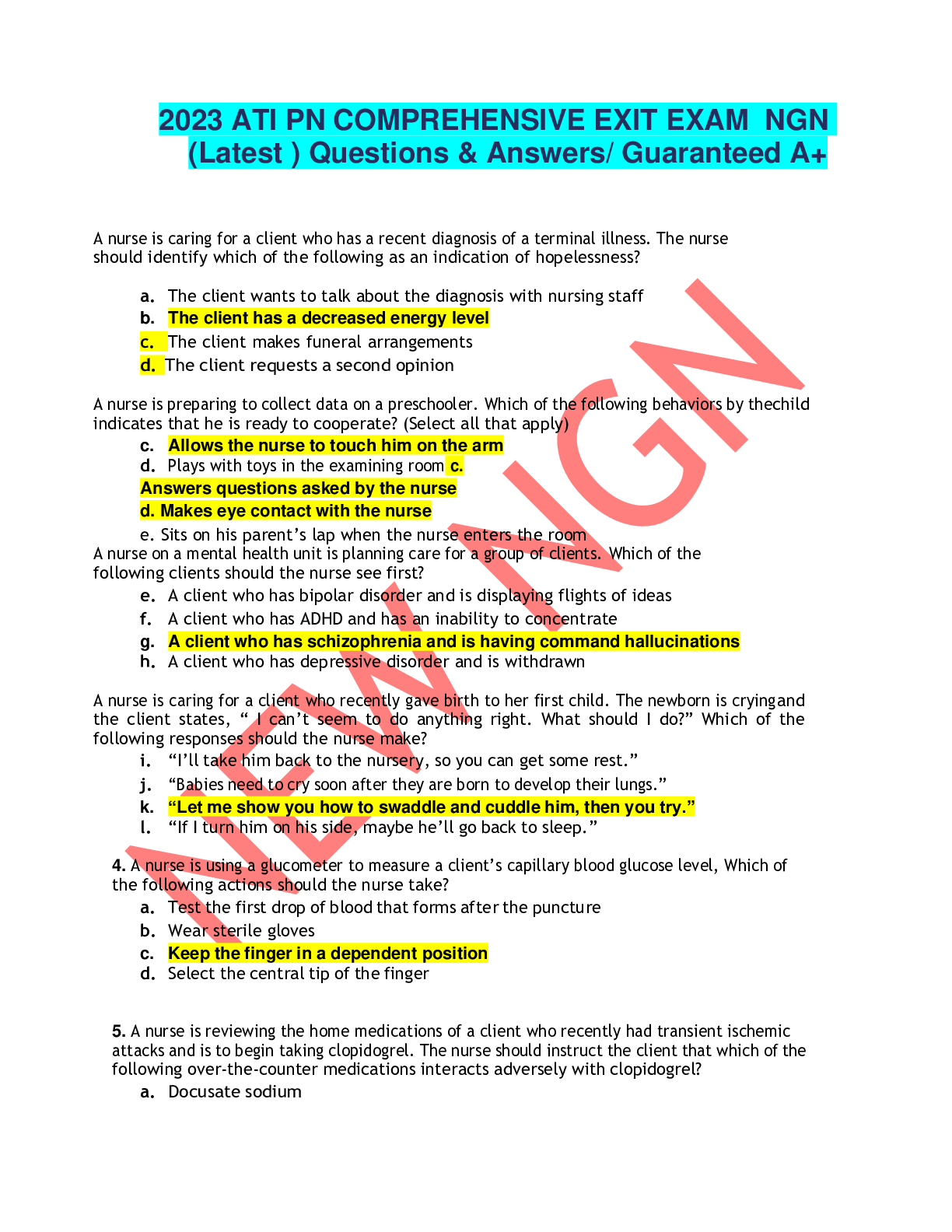
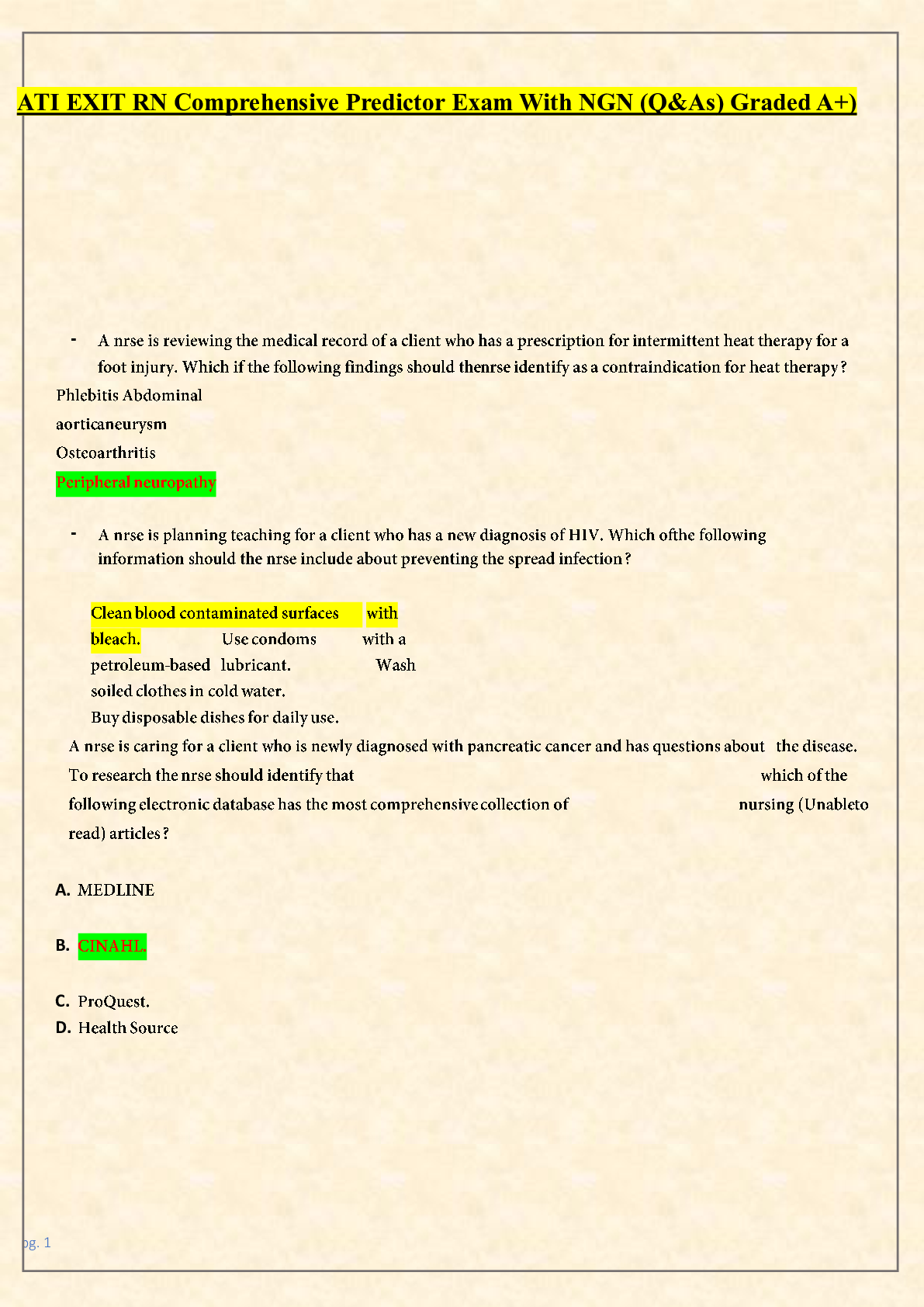



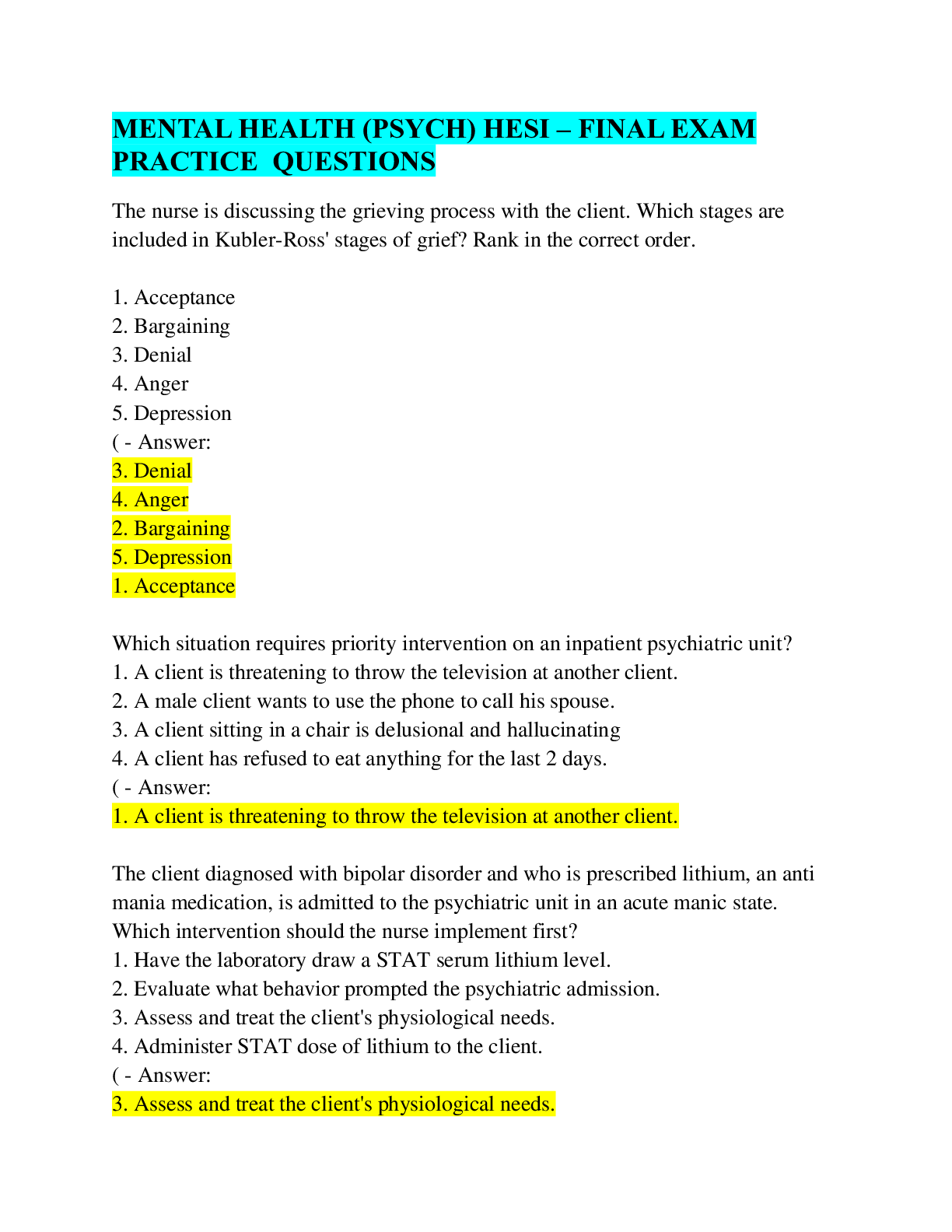
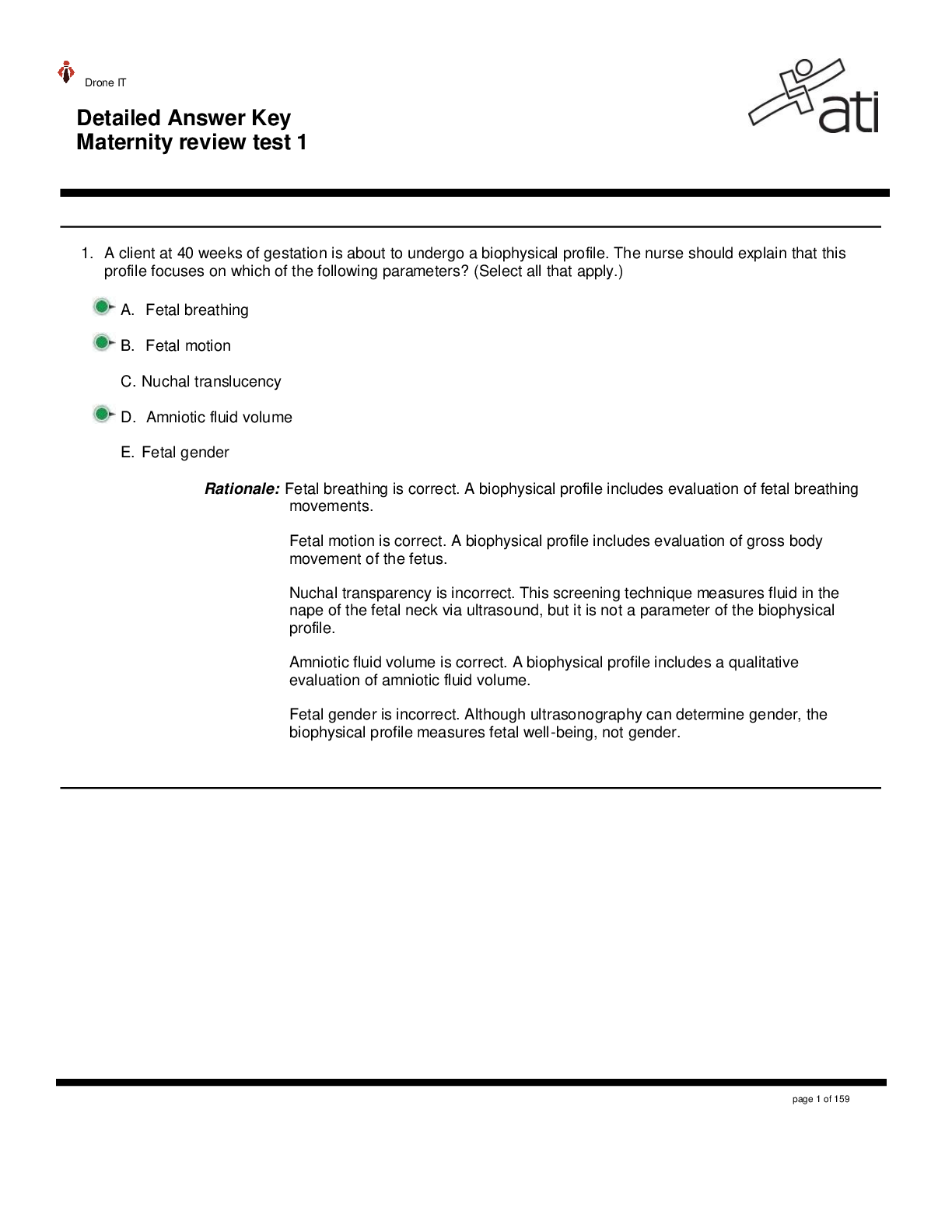
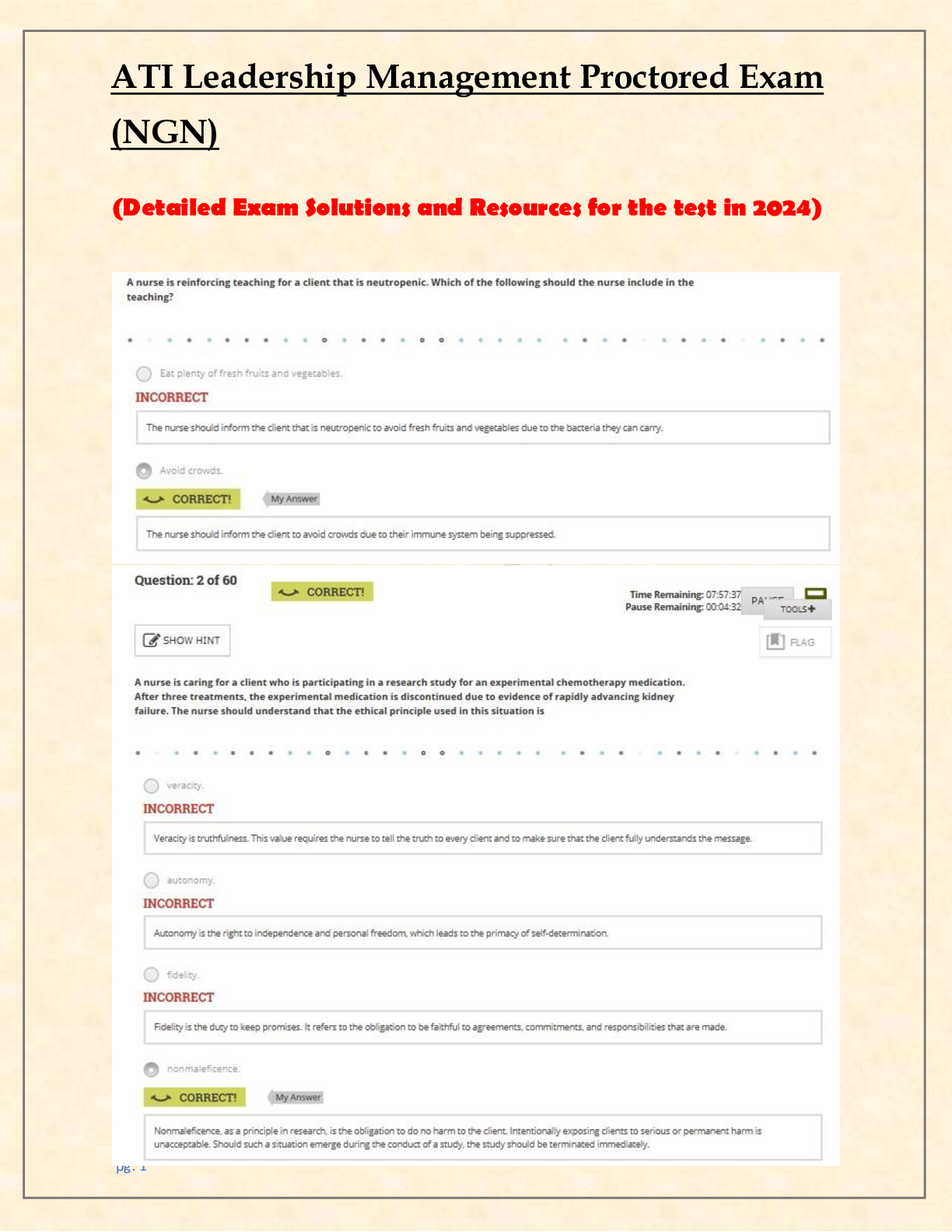
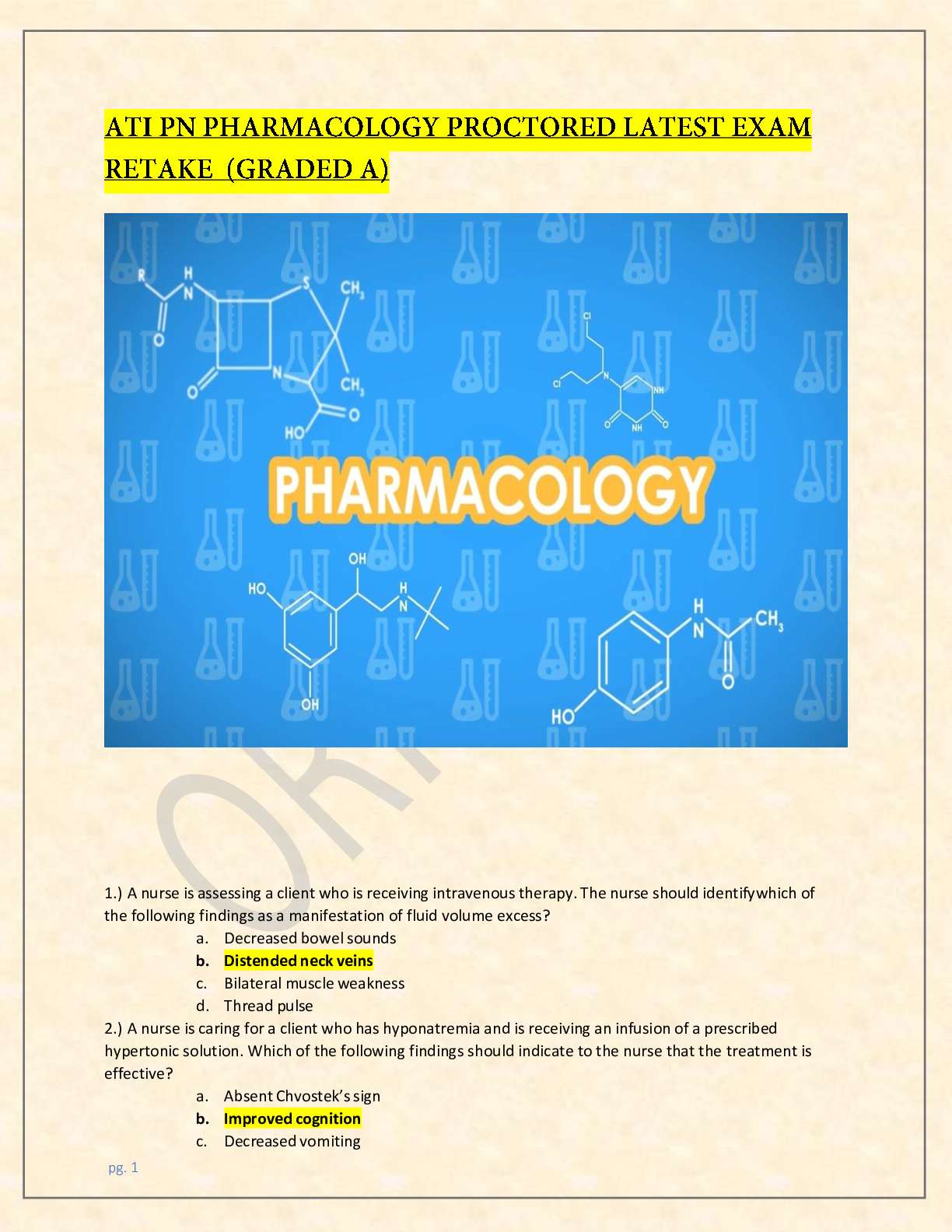

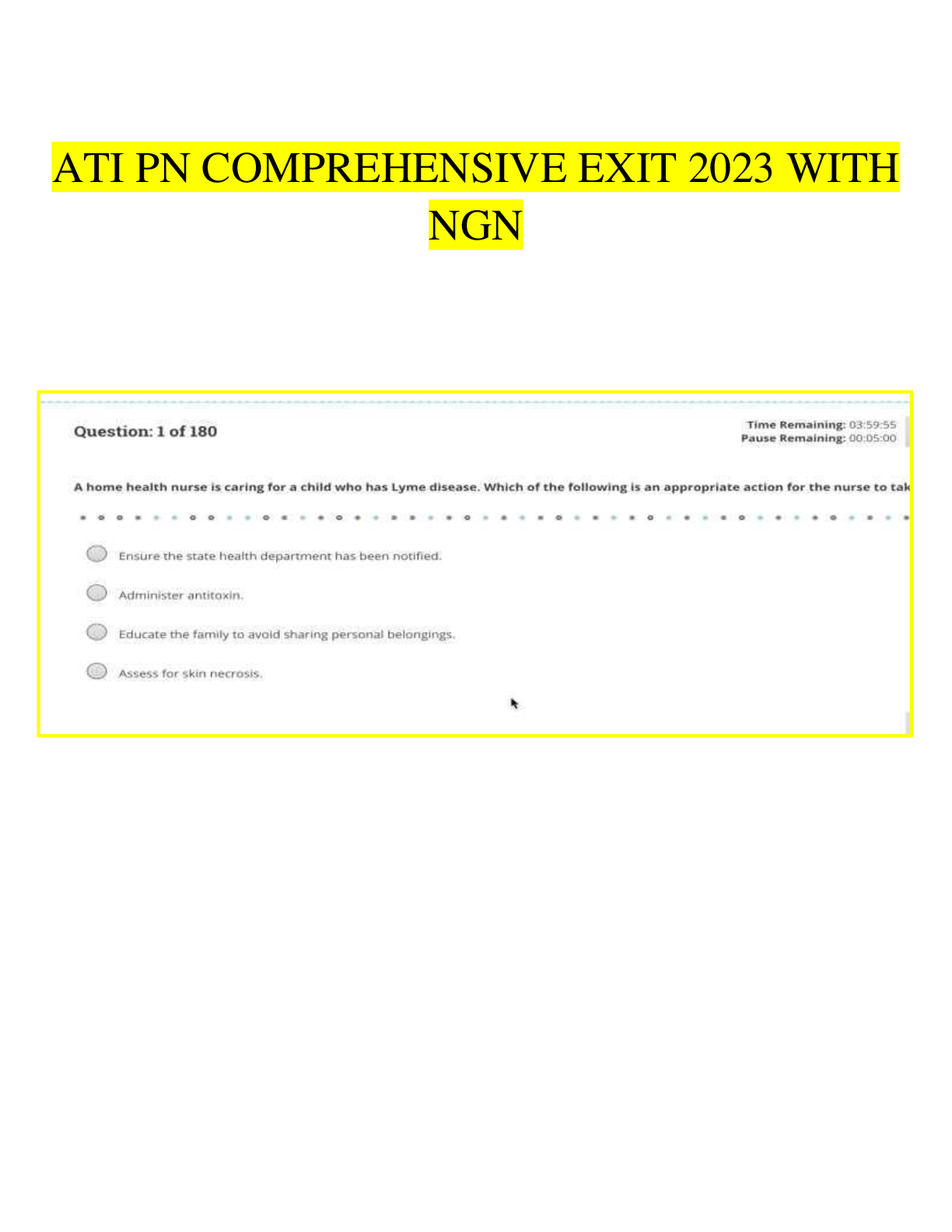
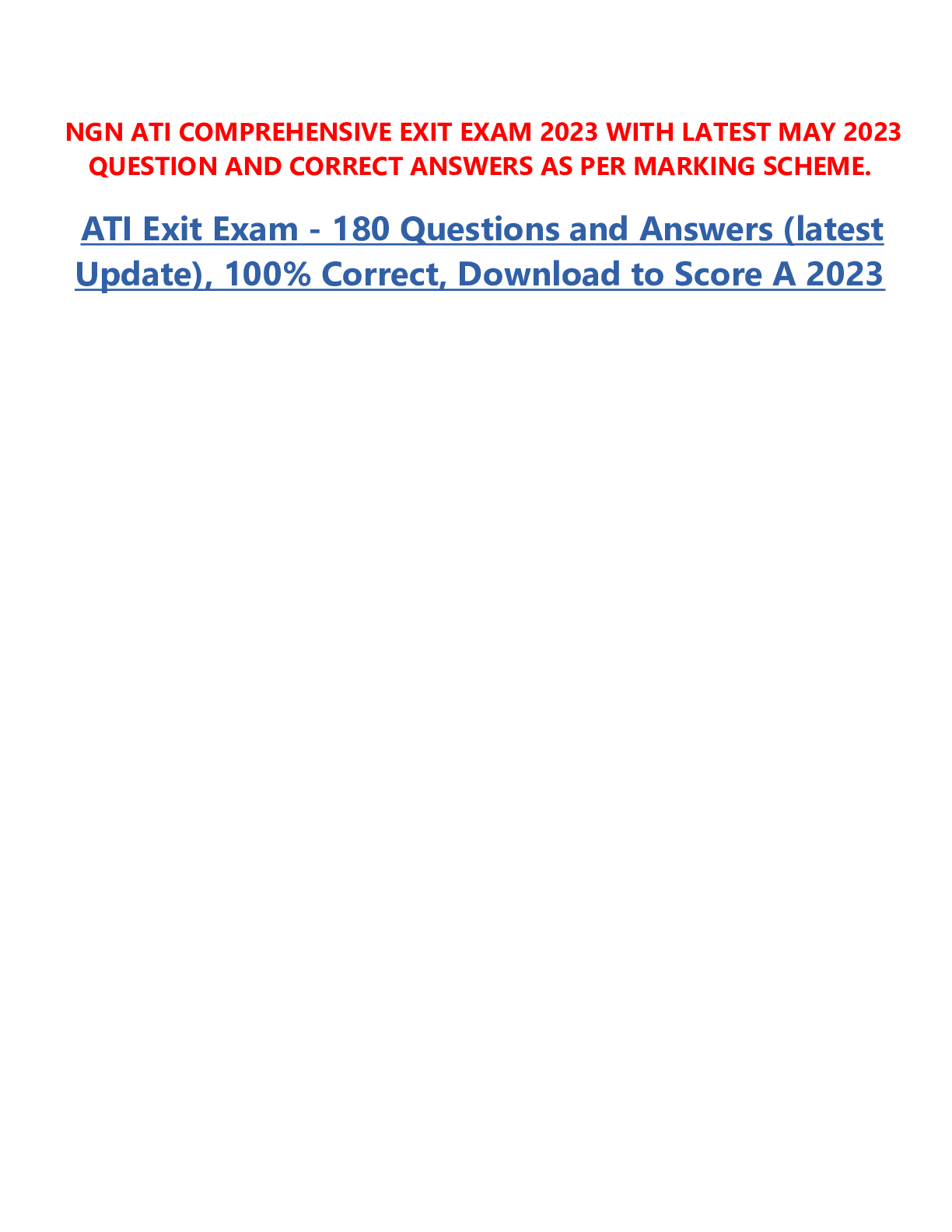

_Already Graded A.png)
